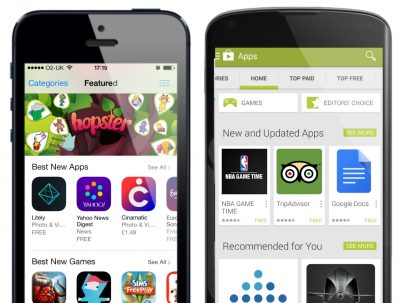Social Media’s Role in Ecommerce Since the growth of social media all types of online businesses have been greatly affected. No matter the industry, i...
Social Media’s Role in Ecommerce
Since the growth of social media all types of online businesses have been greatly affected. No matter the industry, if you are looking to enhance your online business presence, target more customers and increase sales an ecommerce social media strategy can help achieve that.
While most ecommerce businesses have established some kind of social media presence, several others haven’t and are losing out on the benefits. Aside from being great catalysts for communication, social platforms are used daily by millions of people all over the world. For online businesses that type of resource is crucial. Which makes social media marketing strategies an integral part of any plan you adopt to gain success in your online business.
Competition for similar products and services is inevitable so you need a way to stand out to your audience. Social media marketing can do that while also drive more sales considering that 71% of people who have a pleasant social media experience with a brand, recommended it to others.
Now, one thing is talking about the benefits of an ecommerce social media strategy and another is actually doing it.
Let’s look at what you need in order to begin your strategy:
- Choose your social platforms (make sure they fit well with your industry)
- Set specific goals for success
- Understand your consumer behavior and target markets
- Understand customer content needs
- Have a way to track progress
- Focus on sharing, not selling
Setting Up an Ecommerce Social Media Strategy
Before moving onto specific marketing tactics, you need to set some standards. Do so by setting up measurable objectives, such as:
- Amount of social traffic you want to receive
- Number of fans and followers
- Ratio of visitors to conversions
- Ratio of audience growth and engagement to sales
- Number/type of posts compared to amount of engagement
And way before you start posting content, you have to know what your prospects and customers are looking for, other wise you could be wasting time posting content without a target. A great way to learn more about your customers is to to simply ask them. Reach out to them by asking what they want to learn about, what they want from you and monitor their behavior.
You can learn about and monitor your customers through your ecommerce website. Whether starting a new business or aiming at expanding an existing one, an ecommerce website is essential.
Since an online store is necessary to sell anything on the web and social media is a big part of a capable marketing strategy to get sales, then they go hand in hand. Usually, before buying any product online or even from stores, people prefer to read about it. By giving customers different ways to access your brand’s products and services you essentially are giving them different ways to research your products and eventually buy them.
With 7.3 billion people using social media, a website funnels the people that want to get to know your brand specifically. Use this connection to your advantage by engaging directly with customers through your site as well as social media. Keep both platforms in sync and you’ll also be able to better understand customer behavior and keep them happy.
Social Media Marketing Tactics
Once you’ve set up a strategy you need to compliment it with some marketing tactics. Since every social platform comes with its own set of features and changes over time make sure you’re familiar with your network.
By familiarizing with your network you’ll be able to better implement the tactics that best fit your social media strategy.
Here are a couple to consider:
1. User Engagement
A key part of engaging users on social media is content, content, content. You can either share your own content or you user’s content. Users can share photos of them using your product or an experience they had with your brand. Some of those experiences might not always be positive and that’s okay because it gives you a chance to improve service quality.
For instance, Twitter is great for answering quick inquiries. If you can use the platform to turn a customer’s bad experience into a good one, then you build trust. Customers who feel that their issues will be quickly solved are way more likely to stay with you than leave. You could also simply post your own content that users can interact with. However, you must post consistently to maintain and boost your visibility.
2. Hashtags
When posting content on platforms that use hashtags to direct users, take advantage of it. Hashtags are a great way to get your content discovered more frequently, expand your reach and promote interaction. But, if you do decide to use them on your posts make sure you are using hashtags correctly.
3. Blogs
Never underestimate the power of a blog. A blog can showcase your company’s products/services in a creative way and offer more value to your customers. It’s also a great way to maintain a steady stream of new educational content that can be used for social media posts that engages followers. This goes back to the number 1 tactic.
4. Content
If your posts rely on sale pitches and offers than your customers won’t really have anything to stick around for. Your followers need something they can interact with like news, stories and helpful tips. In between interactive posts place promotional posts but focus on customer needs and wants. For example, content with images or videos is more engaging than just text. So you can make product images sharable on sites that focus on image-based content such as Instagram and Pinterest along with written content to enhance your post.
5. Keywords
Just like websites use keywords to help with search engine ranking social media platforms do the same. So do an in-depth keyword search of the terms or phrases that your consumers are searching for and include them in your posts. This will help increase your brand’s visibility while also enable you to reach a larger audience. Aside from your posts you can also incorporate keywords in your image’s alt-tags. This lets search engines read an image and raise its keyword match ranking.
6. Reviews
Reviews give your customers the power to assess your service and products for you. With that type of assessment you can improve your business effectively and gain the trust of your followers. If you work the reviews tactic correctly than you can gain a lot from them. Most importantly, positive recommendations and don’t be afraid of negative reviews because you can learn from them. So consider letting your customers share their reviews or even a sales offer email with their followers.
7. Advertising
Social media ads are a powerful tool to invest in, especially ads that target specific users. For instance, Facebooks ads target users based on specific demographic details. Therefore, if you know your target markets well enough then check out the different ads available on several platforms and figure which ones fit the bill.
Wrap Up
As you develop your ecommerce social media strategy, you’ll want to find a way to not only track the progress, but change behavior based on the data. That can entail things like creating monthly reports or redirecting your plan. Either way, with so many frequent changes in social media your strategy must be able to adapt quickly.
Although we can help you build a great ecommerce store with social media integrations, we can’t help you build a social media marketing strategy. However, we want our customers to always have access to the best resources in order to succeed in business. So, check out this guide to social media marketing in order to learn more about the best practices for your business.







COMMENTS